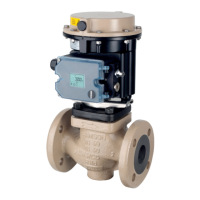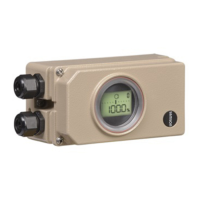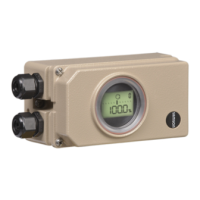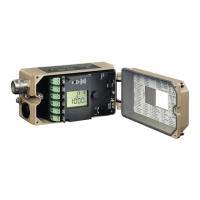28 EB 8389-1S EN
Valve signature
4.1 Reference graphs
During the plotting of the reference graph
(Fig. 2), the valve is moved very slowly from
the end position at which no pressure is ap-
plied to the actuator to the position at which
the maximum air signal is applied to the ac-
tuator. The valve is then moved back again
to its end position. During which, the posi-
tioner switches to open-loop control (control
without feedback).
The sensitivity of reference graph plotting de-
nes at which speed the valve is moved. The
time span how long the reference graph is to
be plotted depends on the sensitivity select-
ed. Select 'High' for valves with small bench
ranges and/or high friction.
After the reference graph has been plotted,
the recorded data points for signal pressure
p
out
and valve position x are converted into
xed points.
Note:
The valve positions cannot be predict-
ed in open-loop control (control with-
out feedback). The reference graph
may differ for the same valve after
each logging.
Dening parameters
The reference graph is automatically plotted
after initialization when 'Initialization includ-
ing valve signature' = Yes.
Start-up
− Initialization including valve signature
(Code 48 - h0): [Yes]
The reference graph can also be plotted sep-
arately outside initialization.
1. Switch to manual mode.
2. Select 'Sensitivity' from the drop-down
list.
3. Start test.
The 'Test information' status indicates
'Test active'. 'D1' and 'TEST' are indicat-
ed in alternating sequence on the posi-
tioner display.
'Function check'
is activated as the
condensed state.
1.
Start-up
− Enter operating mode (Code 0): Manual
2.
Start-up > Reference graphs > Valve
signature
− Sensitivity: Low, [Medium], High
3. − Start test
4.1.1 Analysis and monitoring
The positioner records the data for lling and
venting the actuator. It then determines the
characteristic values listed below:
− 'Mean hysteresis': Average hysteresis
(average signal pressure change Δp
out
in
relation to the spring range)
− 'Min. hysteresis': Lowest possible hystere-
sis (minimum signal pressure change
Δp
out
in relation to the spring range)
− 'Max. hysteresis': Highest possible hys-
teresis (maximum signal pressure change
Δp
out
in relation to the spring range)

